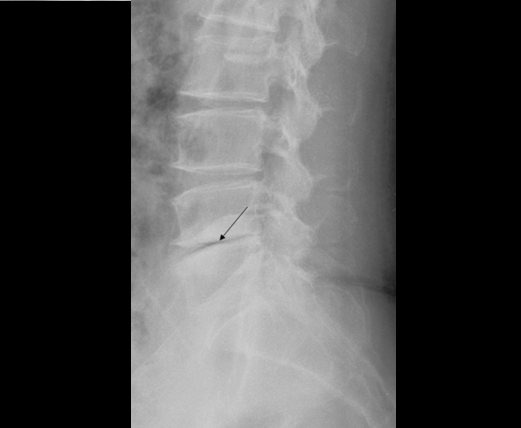Vacuum Disc Phenomenon at l5-s1 Meaning, Symptoms, Causes, Treatment
Vacuum Disc Phenomenon at l5-s1 Meaning
The buildup of gas in the intervertebral disc space, which is frequently linked to degenerative disc degeneration, is known as the "vacuum disc phenomenon." While it barely induces nerve compression, in some situations it may end up in symptomatic epidural gas-containing cysts, which leads to nerve compression and associated symptoms.
Nitrogen and carbon dioxide make up the majority of the gas buildup in the disc space, which is usually detected in the later stages of disc degeneration. If the buildup of gas results in symptoms or nerve compression, surgery might be required.

Vacuum Disc Phenomenon at l5-s1 Symptoms
The vacuum disc phenomenon is a radiological finding that is typically without symptoms, but when the gas builds up inside the spinal canal, it can cause clinical symptoms. Vacuum disc phenomenon symptoms at the L5-S1 level include radicular symptoms, lower back discomfort during standing or rolling, and lower back discomfort in the morning.
Vacuum Disc Phenomenon at l5-s1 Causes
The following are a few possible causes of the vacuum disc phenomenon at the L5-S1 level:
Degenerative disc disease: The intervertebral disc degenerative condition is frequently linked to VP observations.
Spinal instability: Studies have revealed that the vacuum phenomenon is associated with increased side-to-side translation (coronal listhesis), forward-back-and-forth translation (sagittal angular motion), and more disc degeneration. These findings may point to a possible connection between the vacuum phenomenon and spinal instability.
Infection, invasive procedures, and trauma: Infection, invasive treatments, and trauma have also been linked to VP, however, these instances are uncommon.
Vacuum Disc Phenomenon at l5-s1 Treatment
Vacuum Disc Phenomenon must be addressed immediately. Prompt action can lessen symptoms and stop the condition from getting worse.
Nonsurgical Treatment Methods
Medication: To reduce the discomfort and inflammation linked to the Vacuum Disc Phenomenon, nonsurgical treatment options frequently start with drugs. e.g. pain killers and other anti-inflammatory drugs
Physical Therapy: Physical therapy carries a critical function by emphasizing exercises and techniques that enhance spinal functionality and alleviate symptoms.
When symptoms are severe or persistent, surgical interventions may become more necessary. Surgical intervention may be suggested when nonsurgical approaches prove to be ineffective.
Surgical Treatment Options
Microdiscectomy: By removing a part of the damaged disc, a microdiscectomy can relieve pressure on the nearby nerves.
Laminectomy: To make room and release pressure on the spinal cord, a laminectomy involves removing the lamina.
Lumbar Interbody Fusion: In order to support the spine, this surgical treatment fuses adjacent vertebrae together.
Transforaminal Lumbar Interbody Fusion (TLIF): TLIF provides stability and support by addressing problems at the L5-S1 level.
 Reviewed by Simon Albert
on
December 17, 2023
Rating:
Reviewed by Simon Albert
on
December 17, 2023
Rating:











